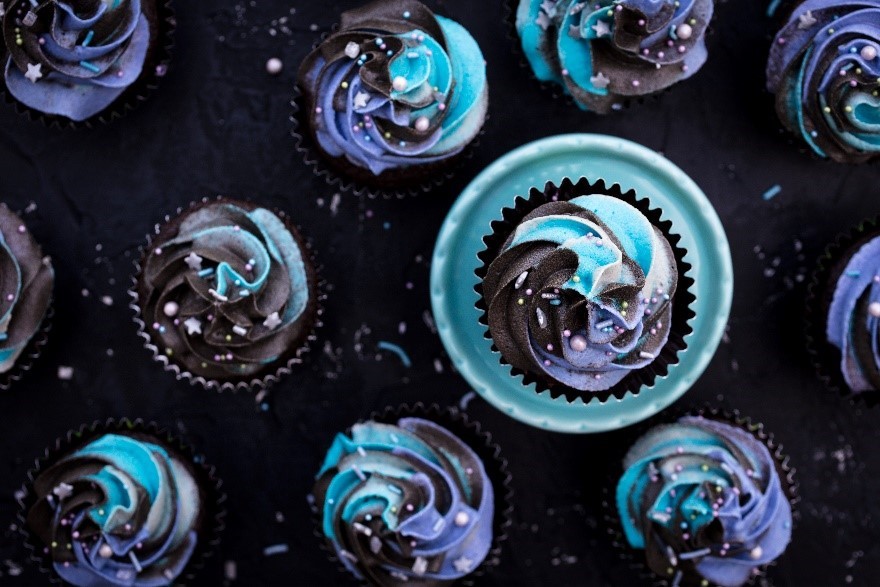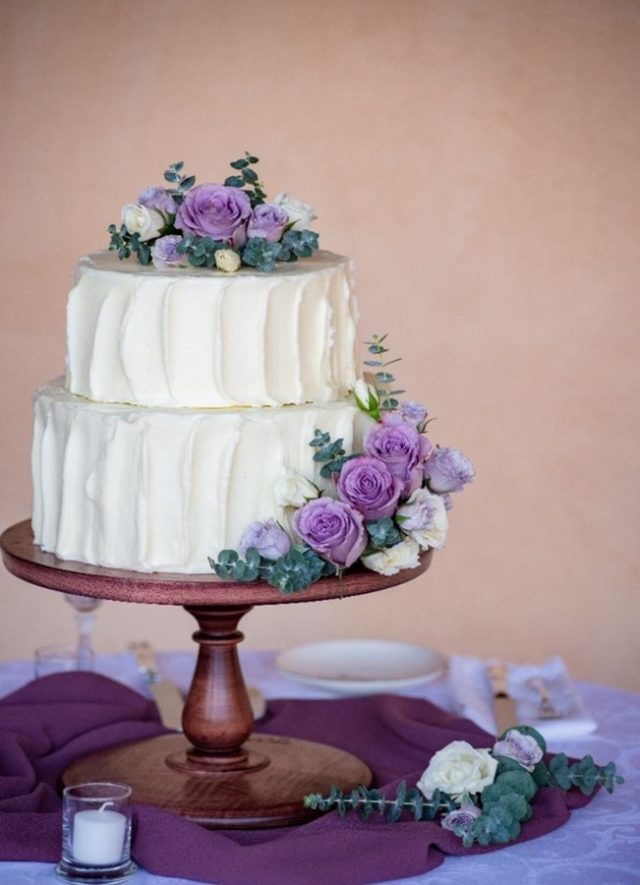Anne and Carl Deane contribute to several foodie and baking publications, and we asked them about the new styles they’re seeing in bakeries and competitions around the country.
Knowing that people “eat with their eyes” helps bakers curate treats that appeal to more than just the tastebuds. Similar to fashion, there are trending “looks” and products confectioners can utilize that add to the charm of otherwise basic cupcakes, cookies, and other pastries.
Understanding new methods, tools, and popular ingredients can offer chefs new perspectives when it comes to their cooking, making their baked goods an equally special experience for both cook and consumer. In the article below, Anne and Carl Deane discuss current, on-trend baking and decorating products being used by the top bakers and pastry chefs in the field.
Minimalist Florals
Among the most popular cake design in recent years doesn’t involve much work at all! In fact, the less busy the look of the cake, the more on-trend it is according to Carl Deane. Not only have florals been on the up and up in the style world, but they’ve also gained momentum in the culinary world in conjunction.
The tasteful use of florals gives baked goods a pop of color without compromising the mature, refined look of the dessert. Anne Deane discusses below some of the most notable aspects of a minimal floral cake.
A “Barely There” Look
Those who have hand-decorated a cake can attest to how difficult it is to work through those first crumb and base coats before moving on to the rest of the decorating. Thankfully, this method is much more forgiving- some techniques don’t involve a full coating at all says Carl Deane.
Achieving this base requires an icing spatula and, of course, icing. White is traditional, but pastel shades work depending on the idealized finish of the cake. A crumb coat adds a more cohesive, sheer look to the cake, while simply icing between the cake layers offers a more industrial finish.
Either way, both methods are far simpler than the classic, opaque icing most are used to reports Anne and Carl Deane.
Anne and Carl Deane Discuss Edible Flowers
Typically used as garnishes, edible flowers are incredibly simple to utilize. They best adhere to cakes with a crumb coat and can be bought, or even made (when flowers are sourced from trustworthy areas).
Carl Deane says using edible flowers gives cakes a nature-esque, easy feel that makes them perfect for picnics and garden weddings. There’s a homegrown ambiance with this option that other methods can’t replicate.
Icing Flowers
Though hand drawing flowers can be a deeply intricate process, there is a slew of methods that non-artists can use to recreate the delicate feel of floral designs. Anne Deane notes how among the easiest techniques include the use of pastel shades with a small palette knife.
The best part about this approach is that there’s no call for precision- there’s not even a need to clean off the knife in between strokes. Simply keeping the general shape of flower petals is enough.
Textured Cupcakes
It seems that when the minimalist nature of cake decorating rose, the maximalist nature of cupcake decorating spiked instead! When executed correctly, an ostentatious cupcake design can look elegant and intricate says Carl Deane. In reality, all it takes is a gentle hand and an understanding of complementary colors.
 Rich Colors
Rich Colors
What gives these cupcakes such a striking look is their color. Deeply saturated and bright, these icing shades can be achieved through gel food coloring or high-quality store-bought products.
To add variance to the shades of the cupcakes, decorators choose colors in the same family. This could mean cool or warm tones, different shades of the same color, or colors complementary to one another in the color wheel according to Anne Deane.
Variations of Texture
Break out the icing tips! Complex-looking icing shapes make for an elaborate look and place emphasis on the details (even if each cupcake took less than 5 minutes to decorate!). There’s no rhyme or reason to what tips work with one another, and no set design to follow with this method. Simply fill in the top of the cupcake with an array of tips and icing of choice.
Here’s a great video by Living the Cake Life on YouTube that displays this technique.
Bling
Though at this point the cupcake is ready for presentation, there’s something about the addition of carefully placed nonpareils that give this display life. Gold or silver are the most popular colors to choose from (they give that luxurious touch), but they do come in an array of looks to work with themes, events, etc.
Detailed Cookies
Anne and Carl Deane say that if there’s any form of decorating that can withstand the test of time, it’s beautifully designed royal icing patterns atop the classic sugar cookie. This method is used worldwide to showcase a plethora of different designs, ranging from simple florals to incredibly masterful works of art.
Utilizing the customizing ability of tipless icing bags, recreating fine line work can be simple. This is a great skill to have, especially with the rise of batches of personalized royal icing cookies being used to celebrate occasions like birthdays, album releases, engagements, and more.
PS Cookies championed the popularity of these personalized batches, their cookies priced based on colors used and intricacy of design.
Final Thoughts
With the vastness of the confectionary world ever-growing, it’s comforting to have trends to lean on now and again. They’re crowd-pleasing, easy to accomplish with dedication, and always turn out stunning, making them the perfect project for the baking novice to the baking professional says Anne and Carl Deane.







